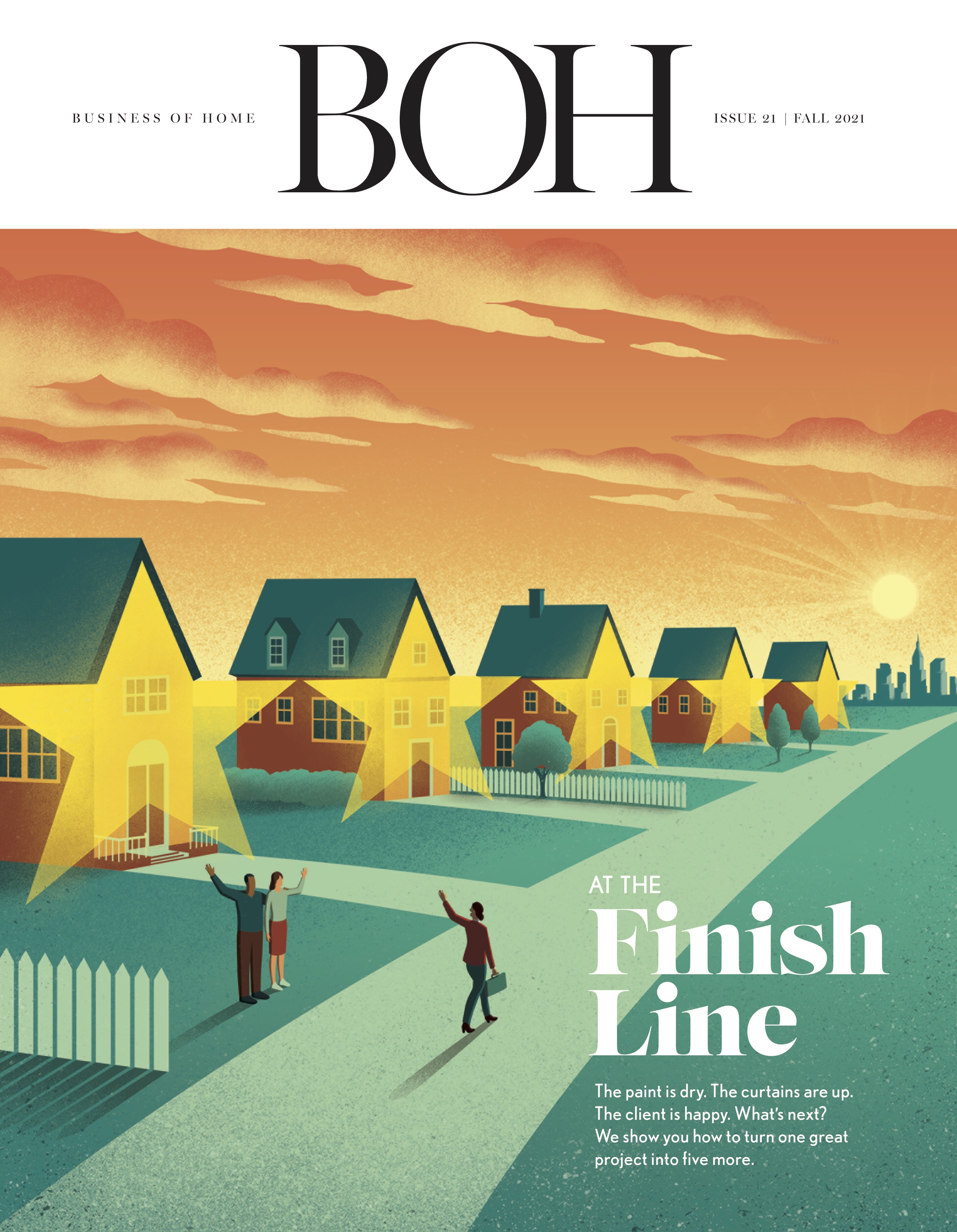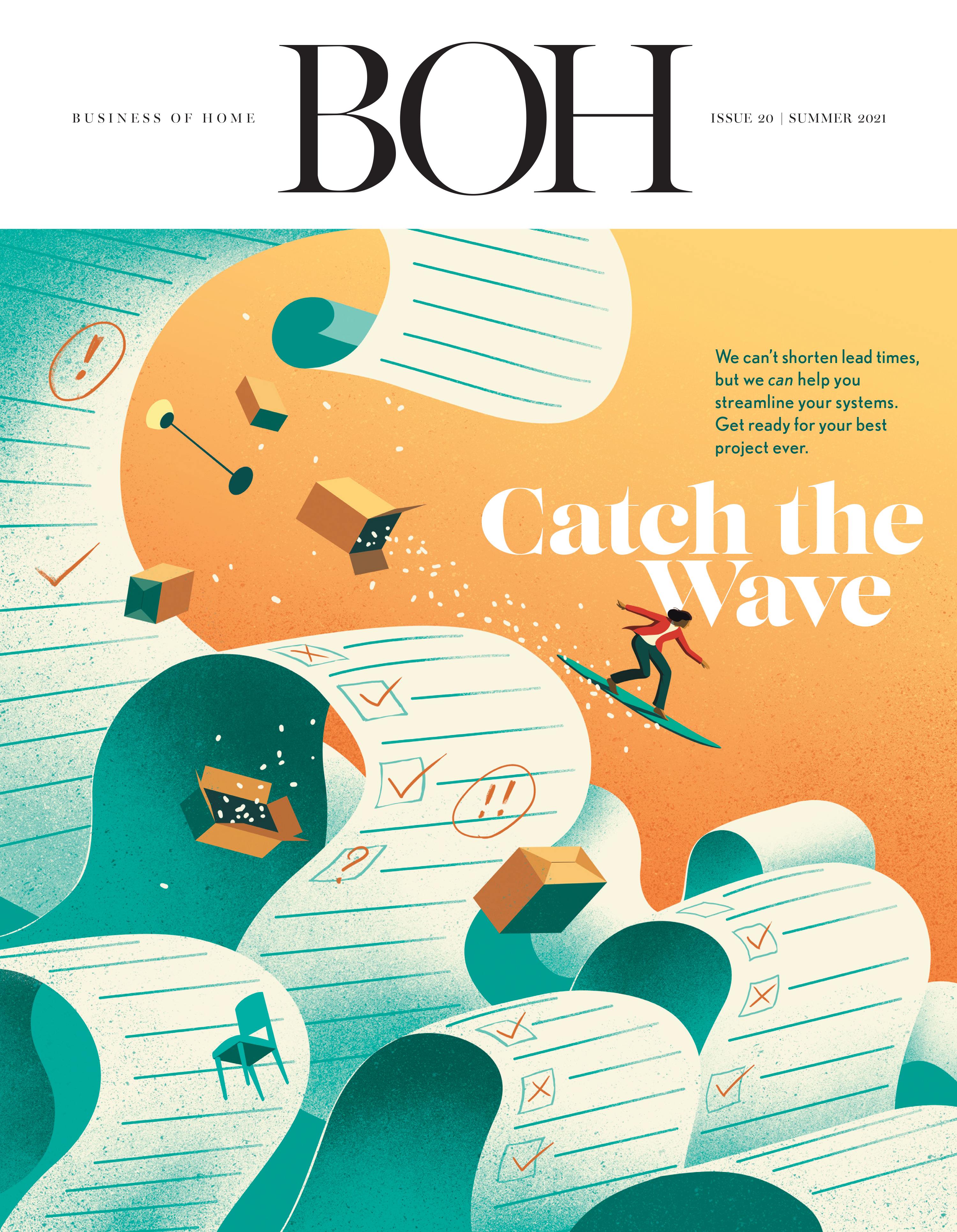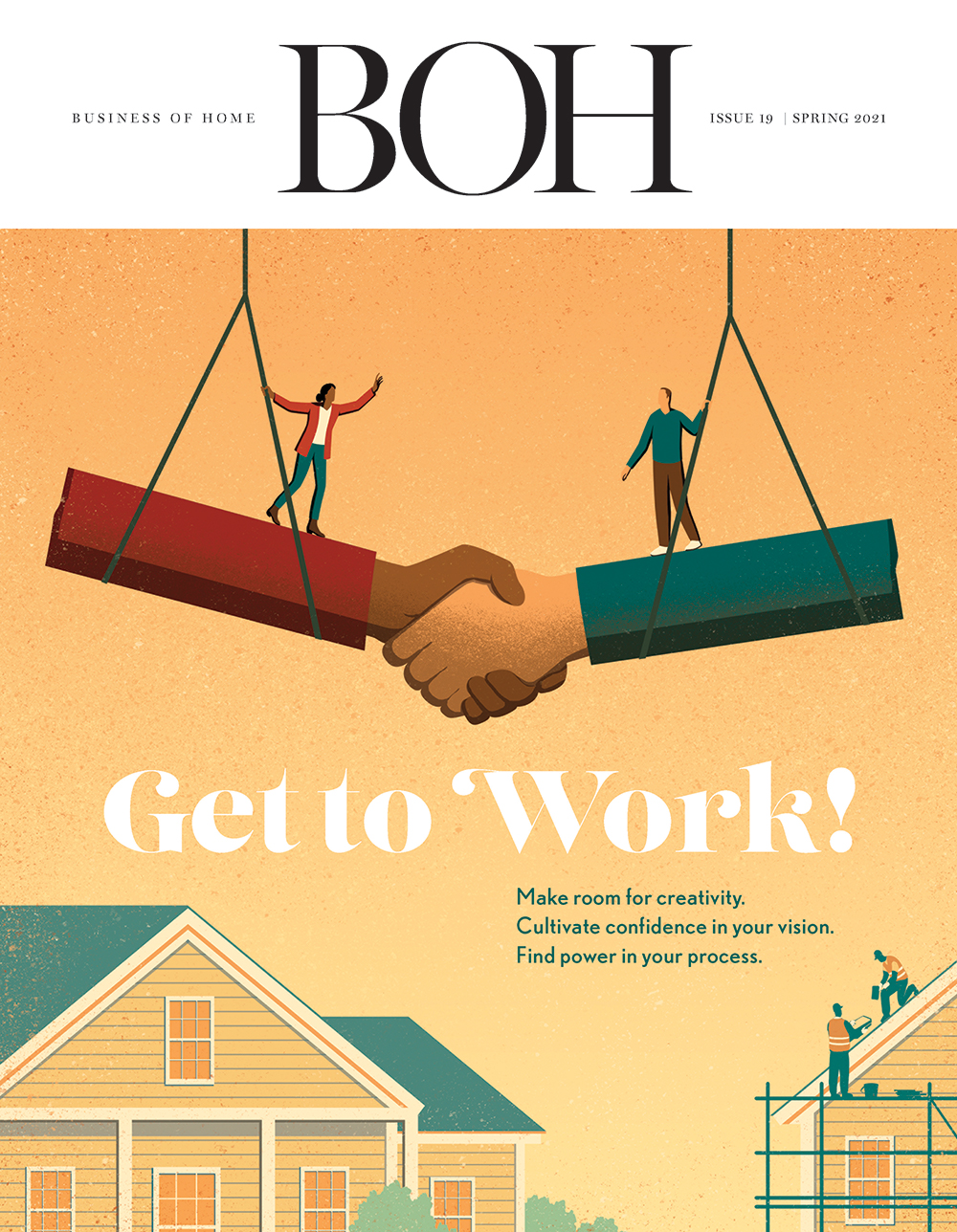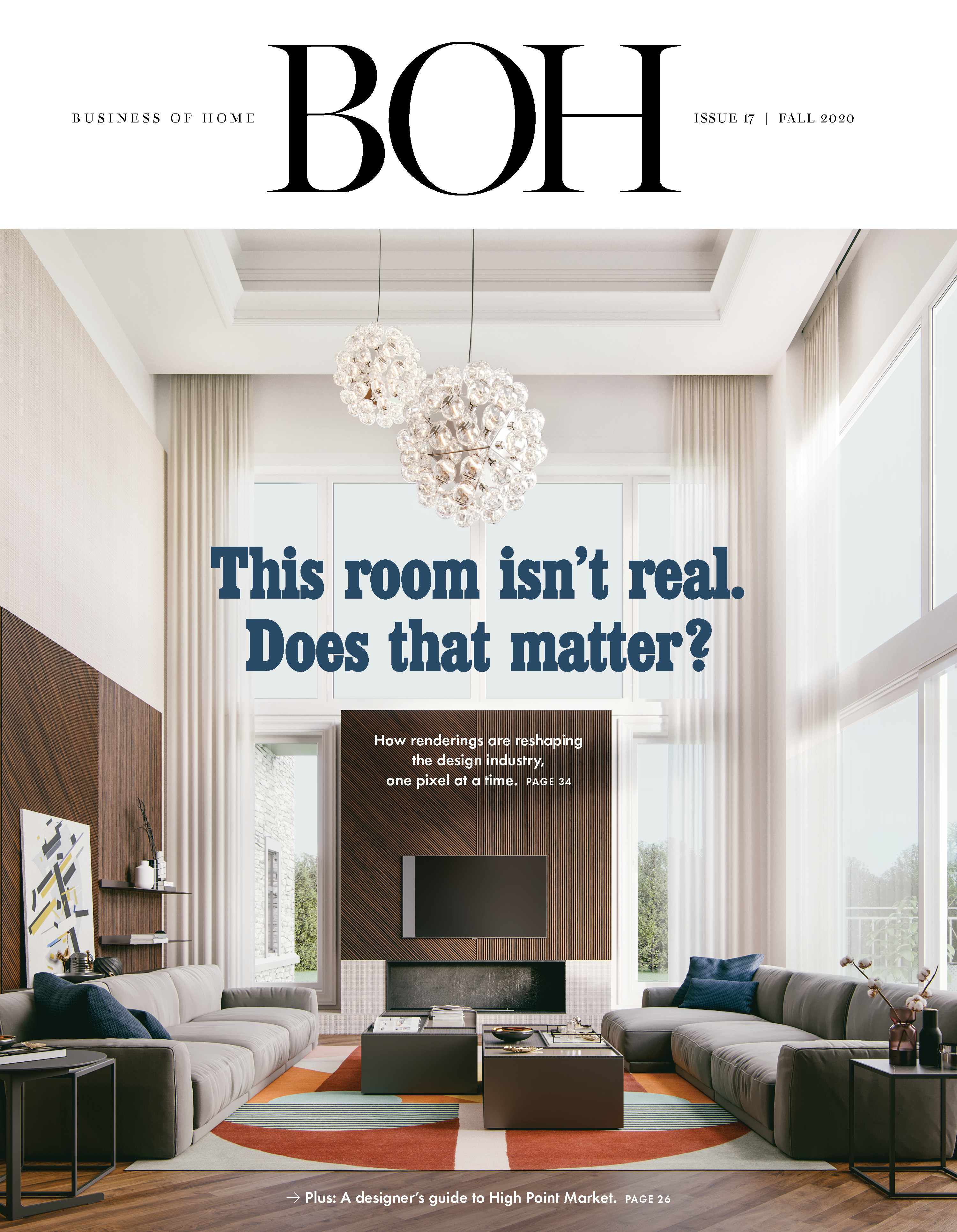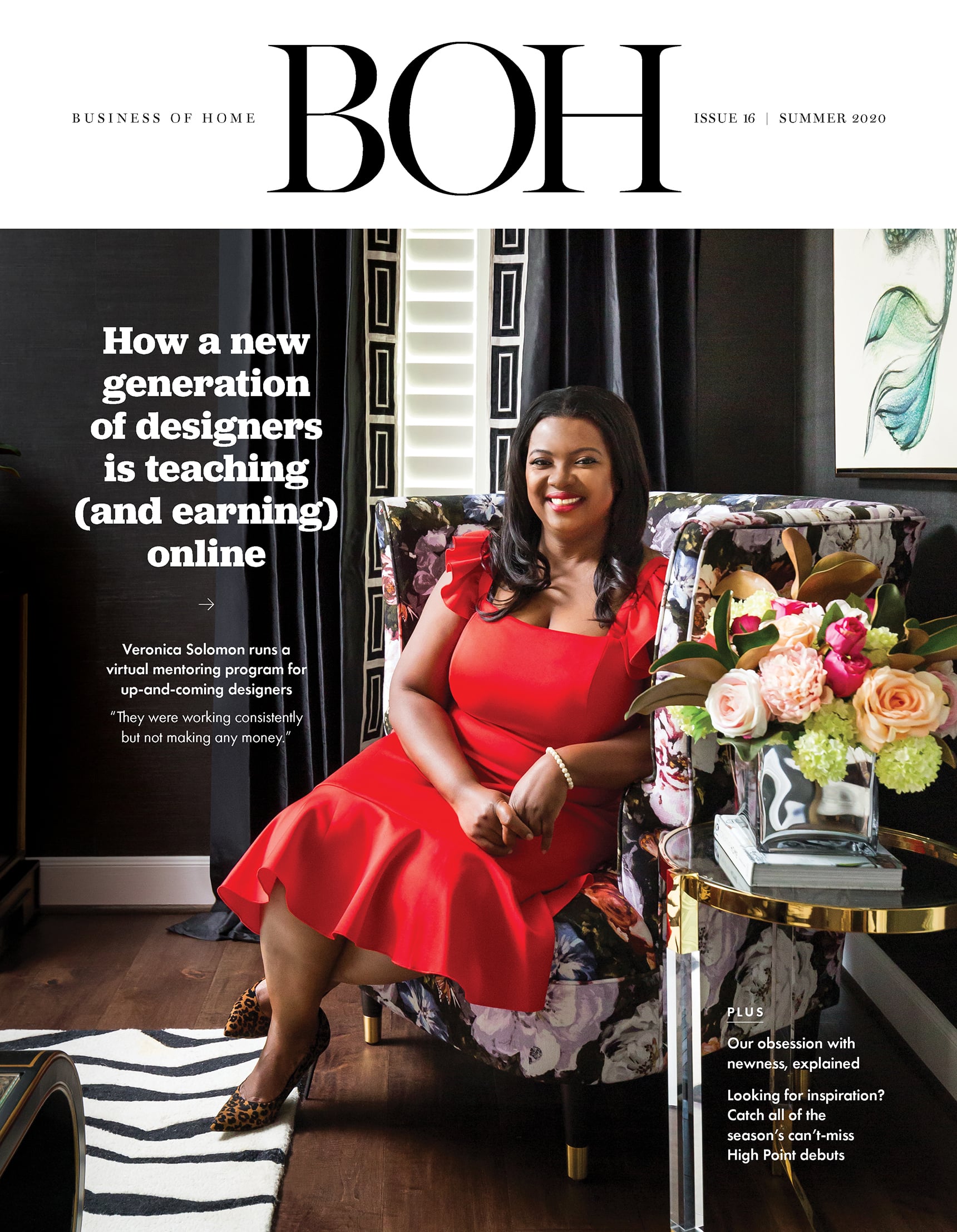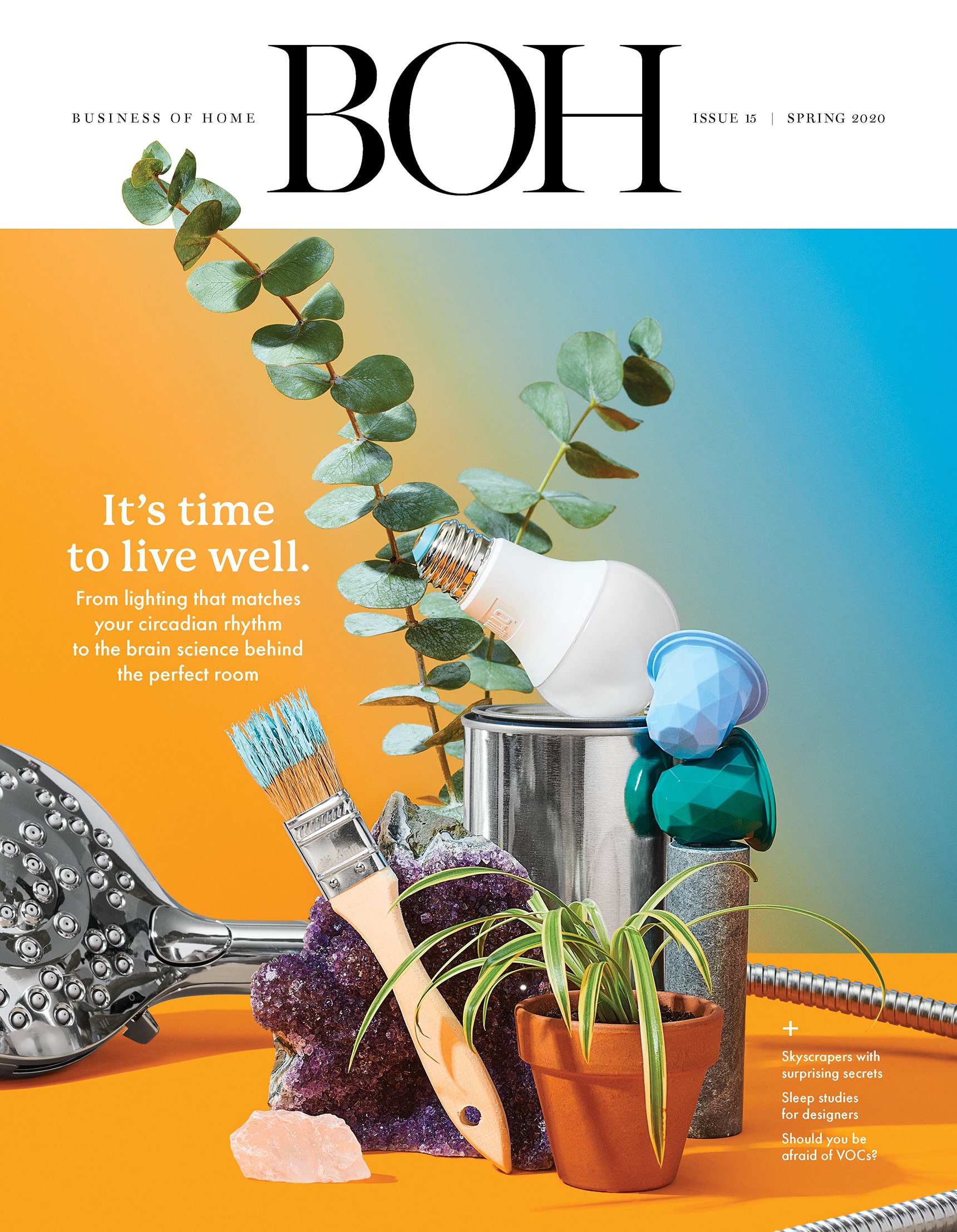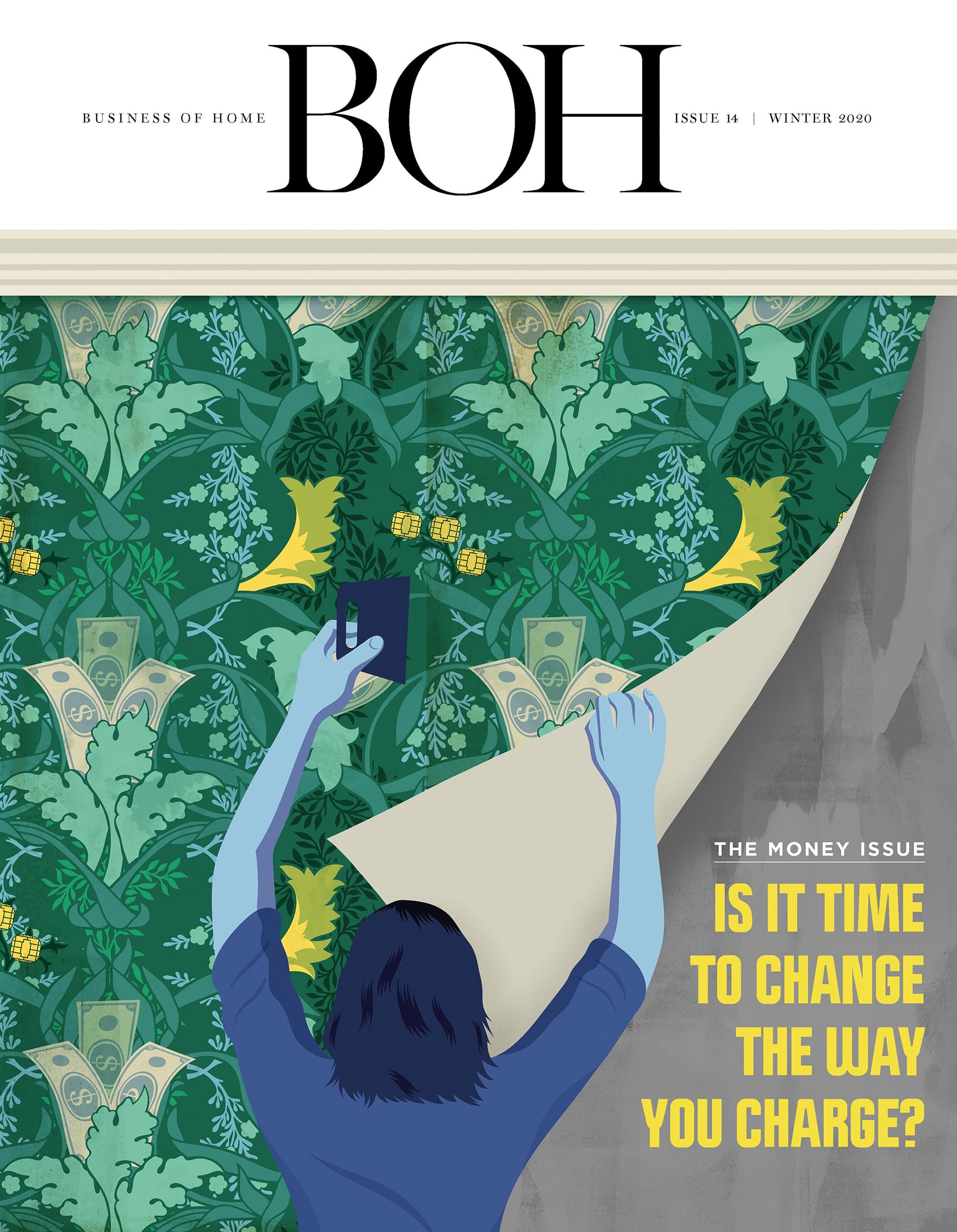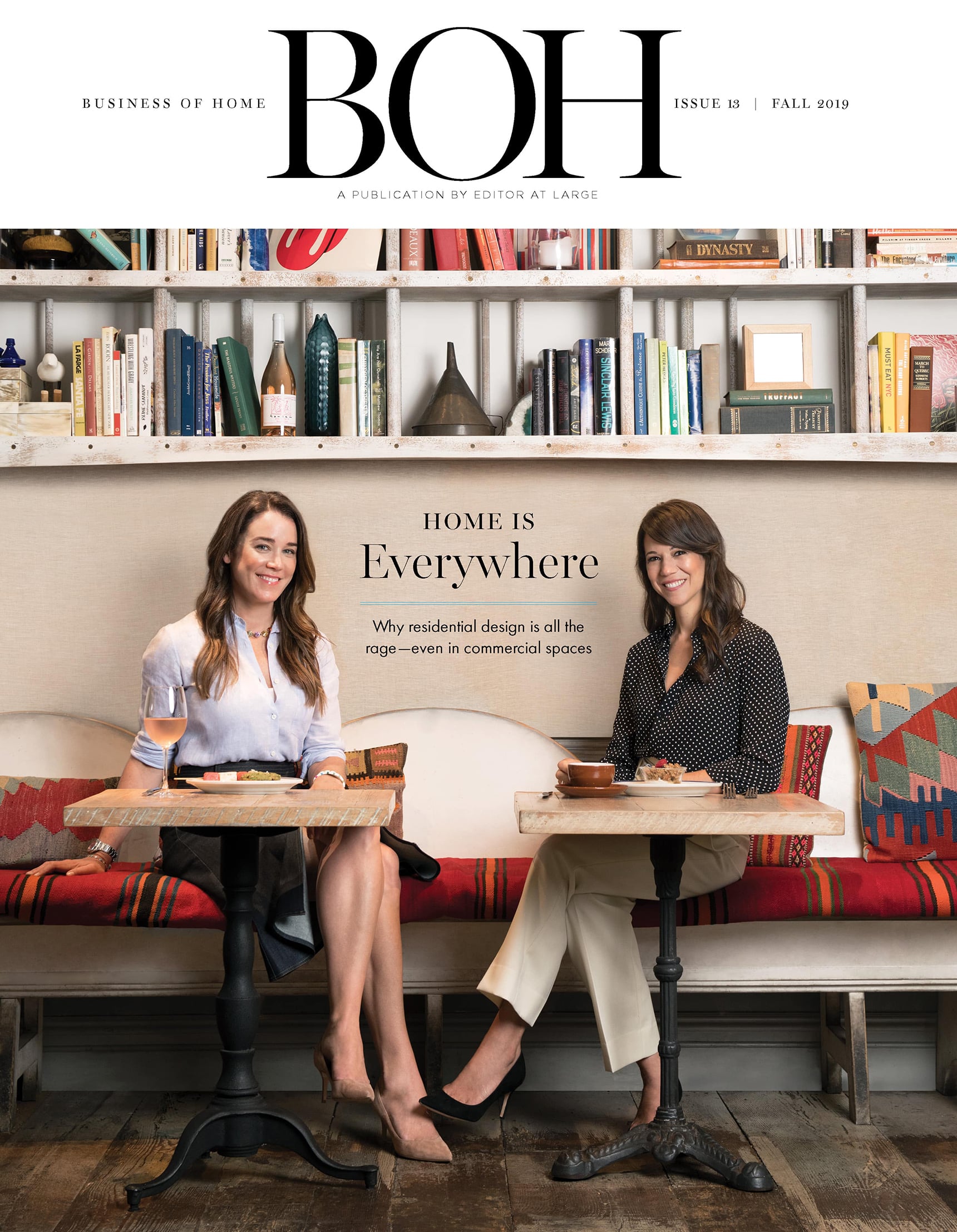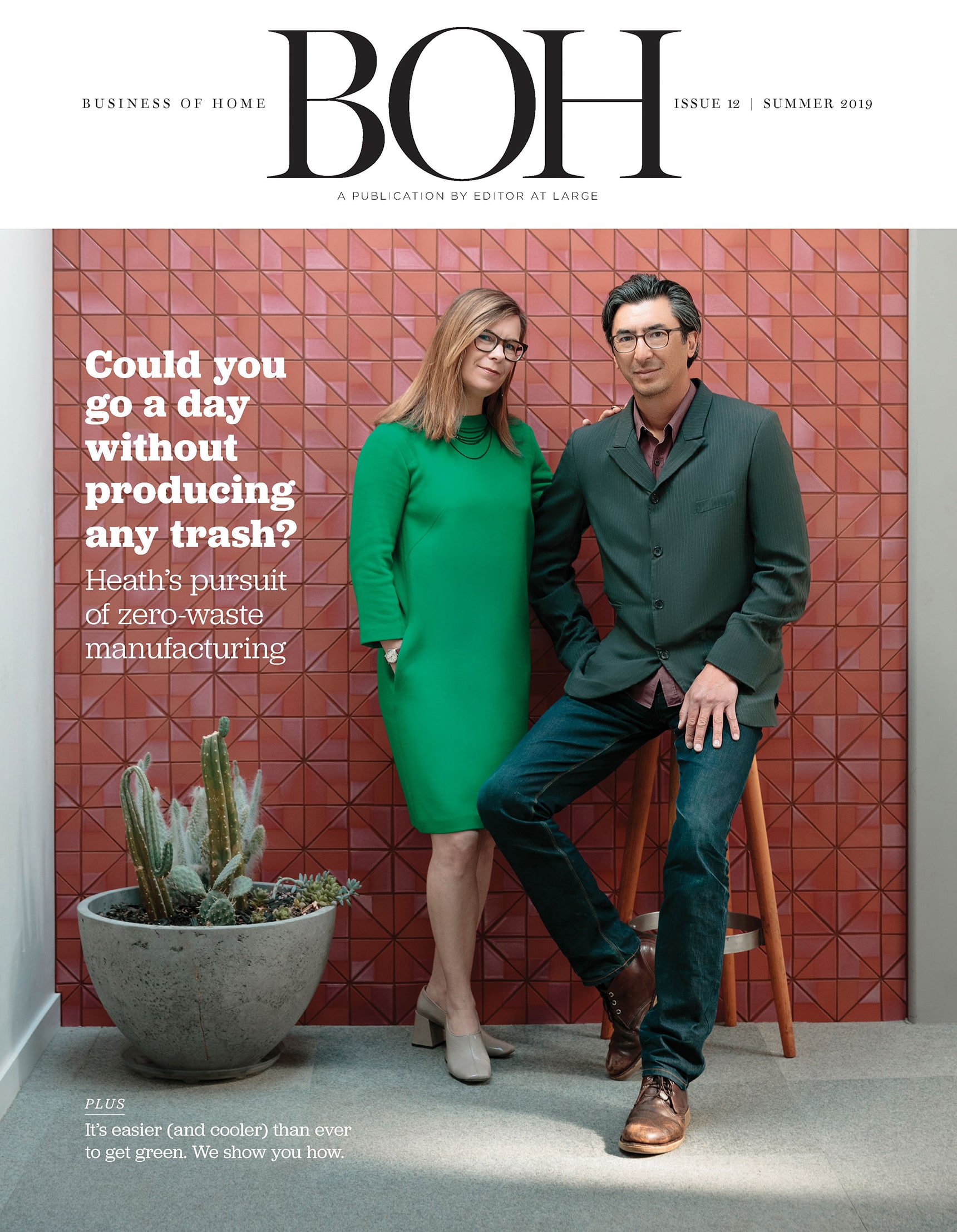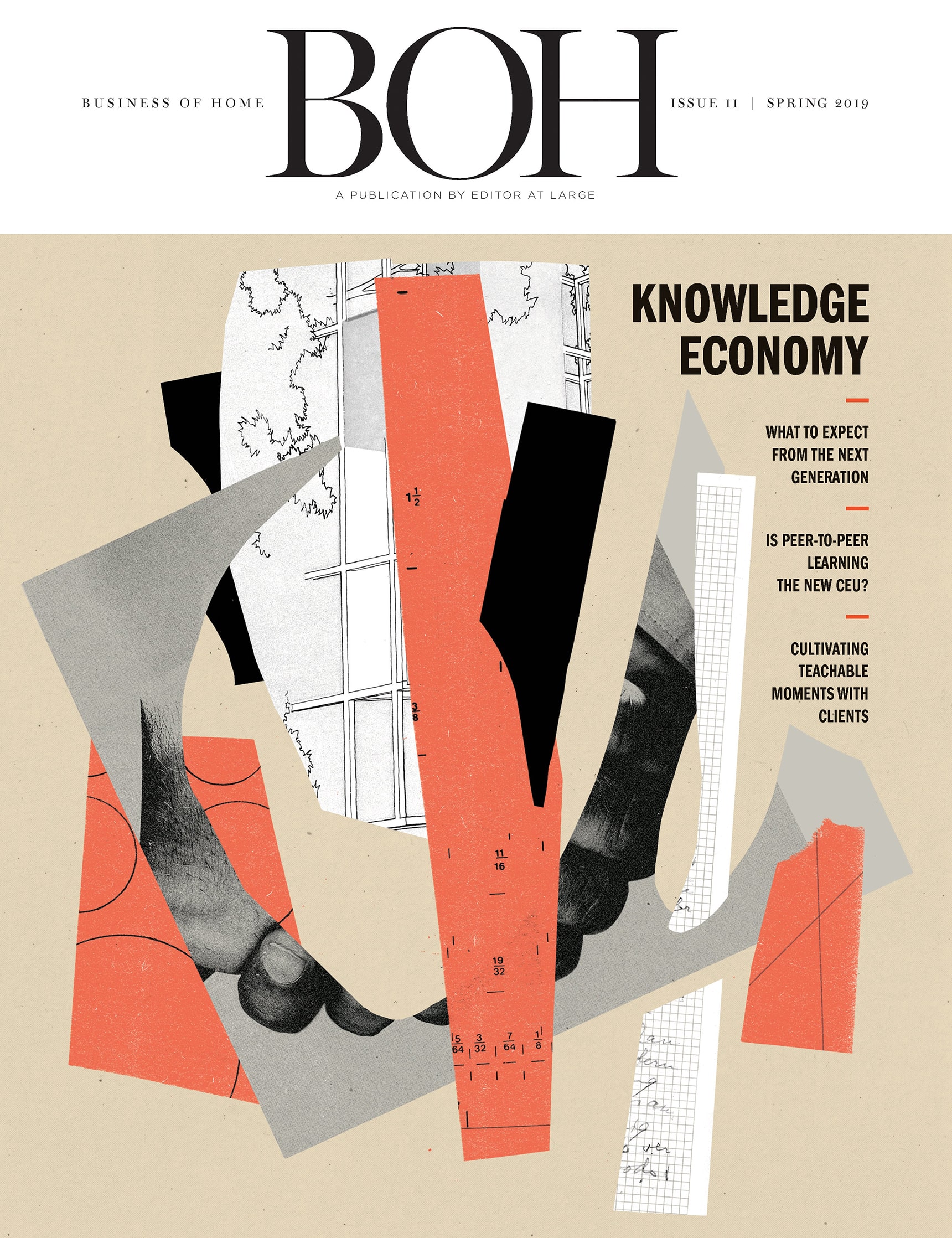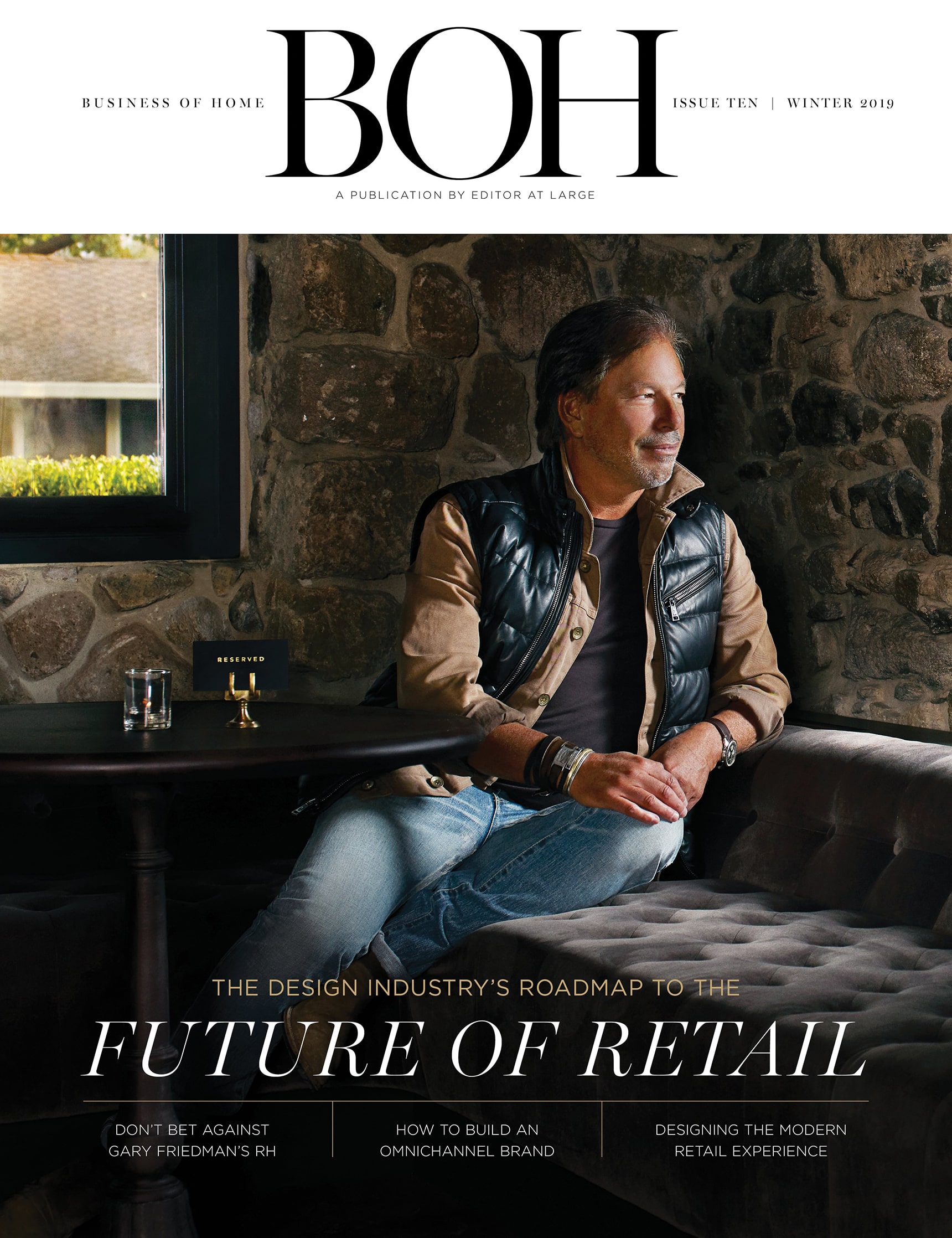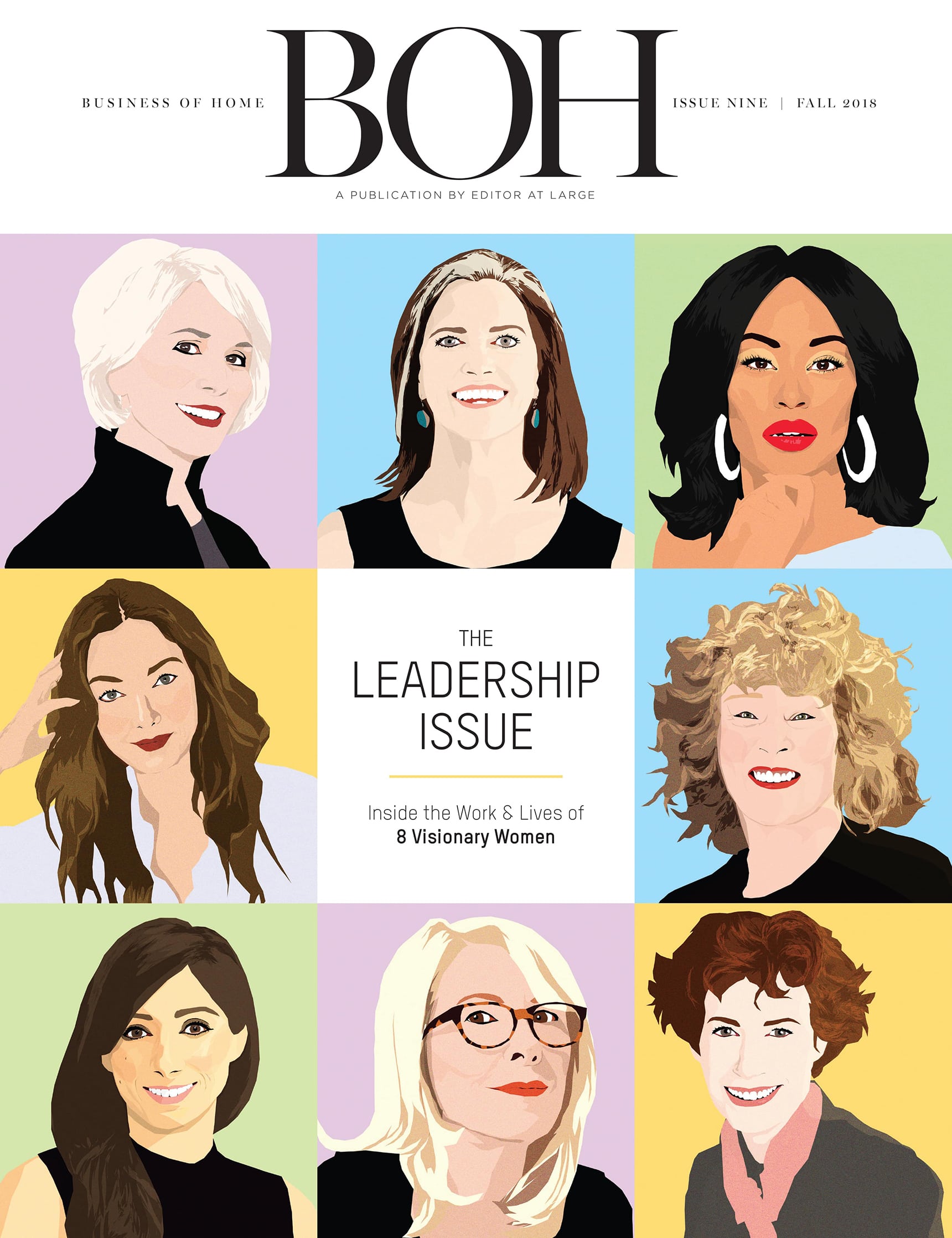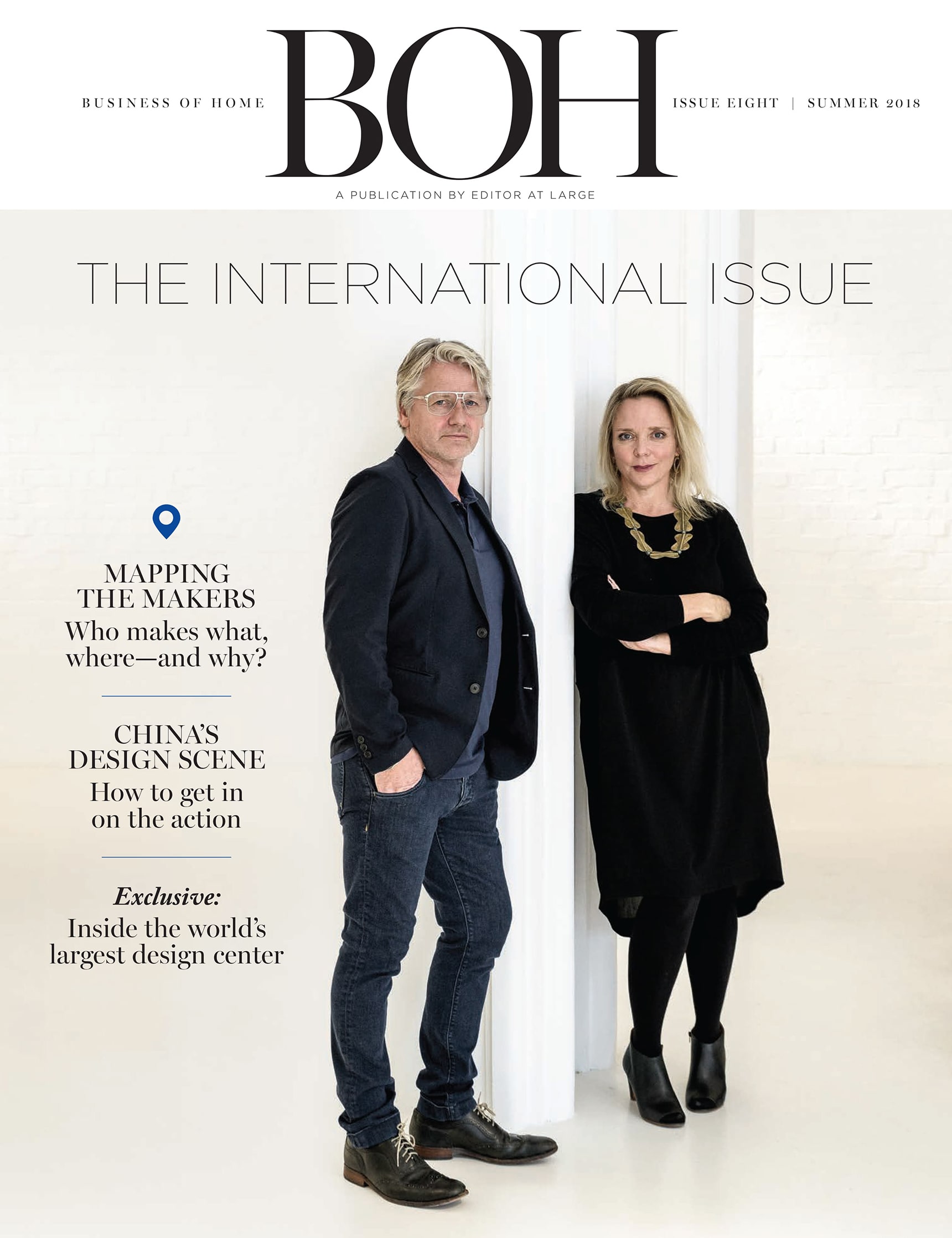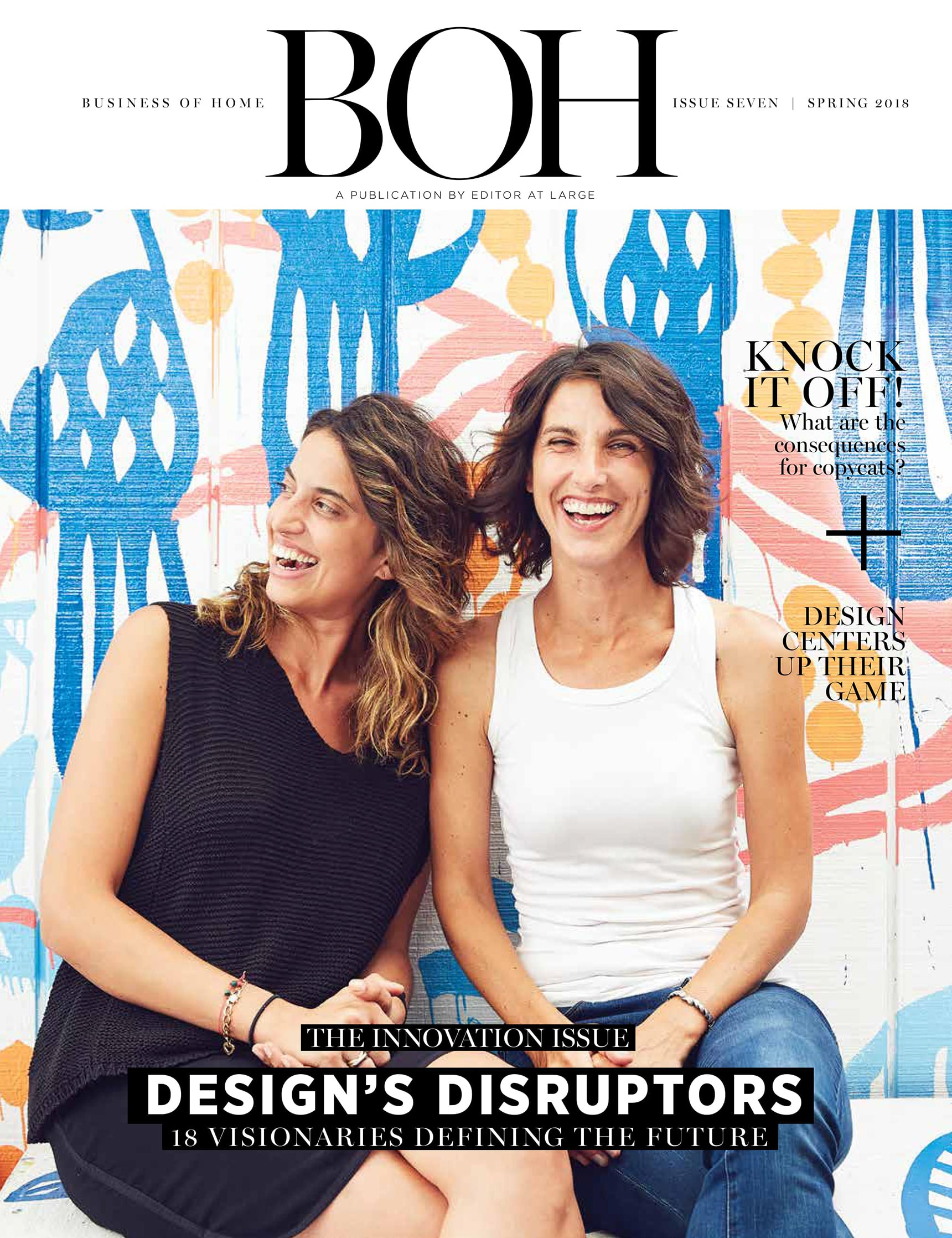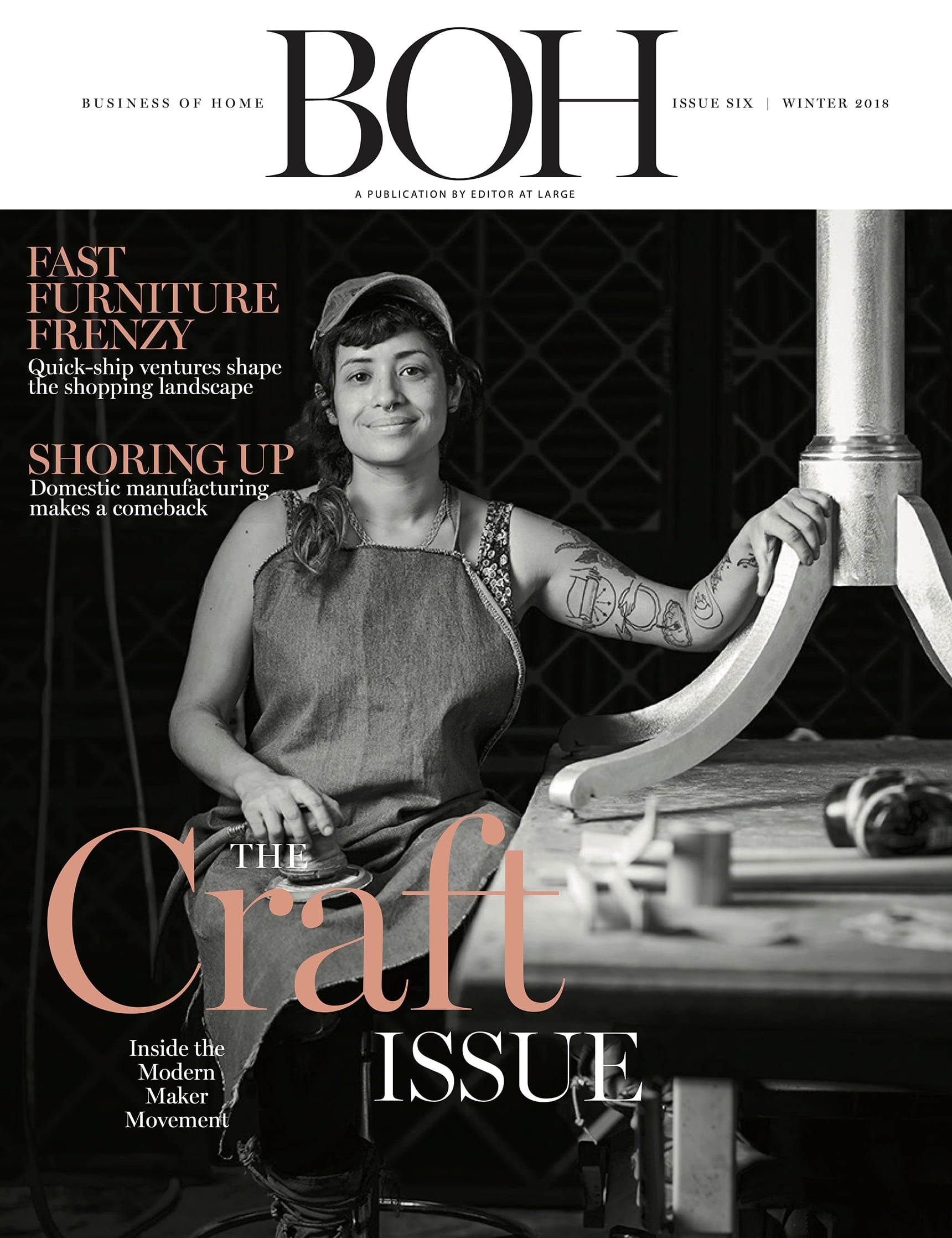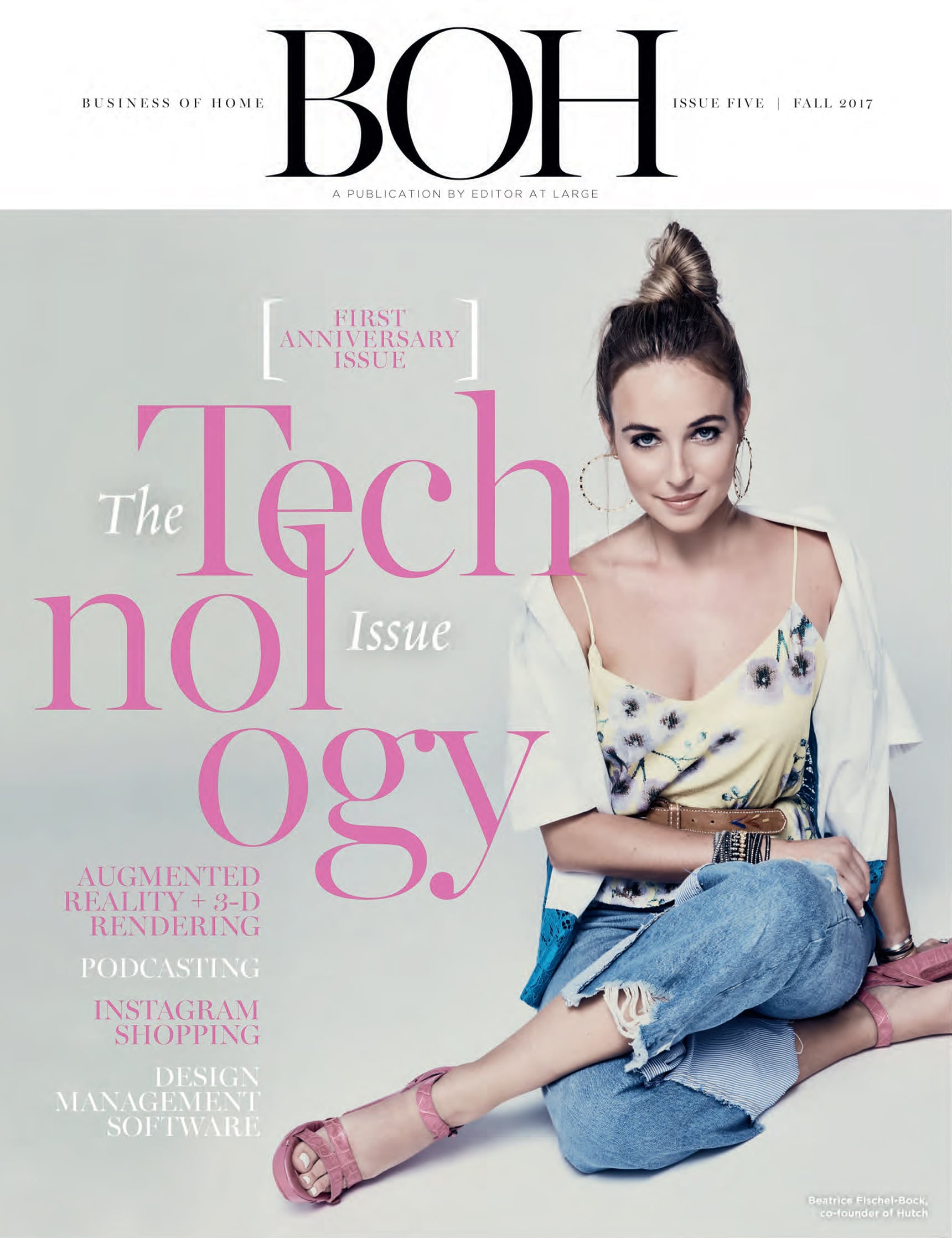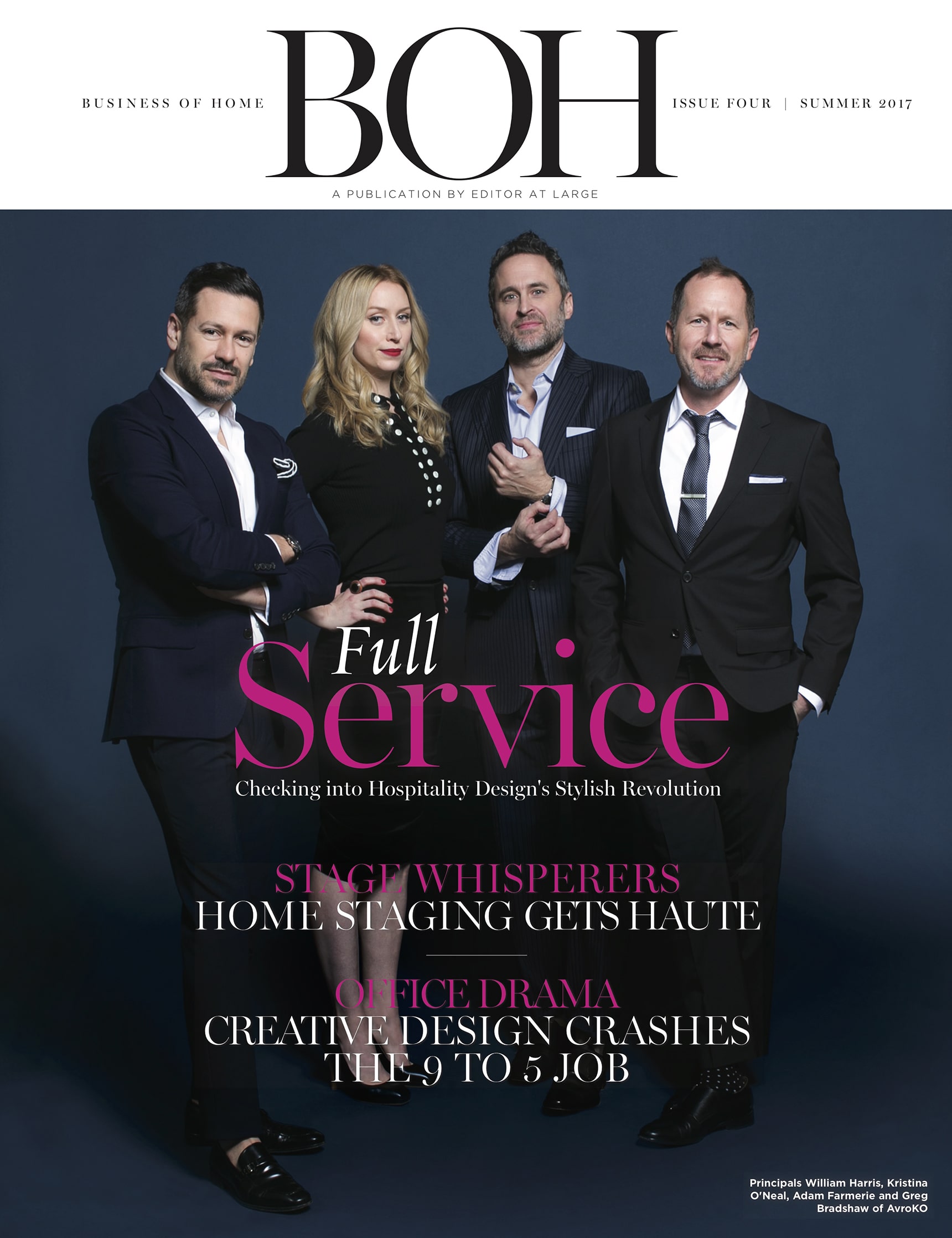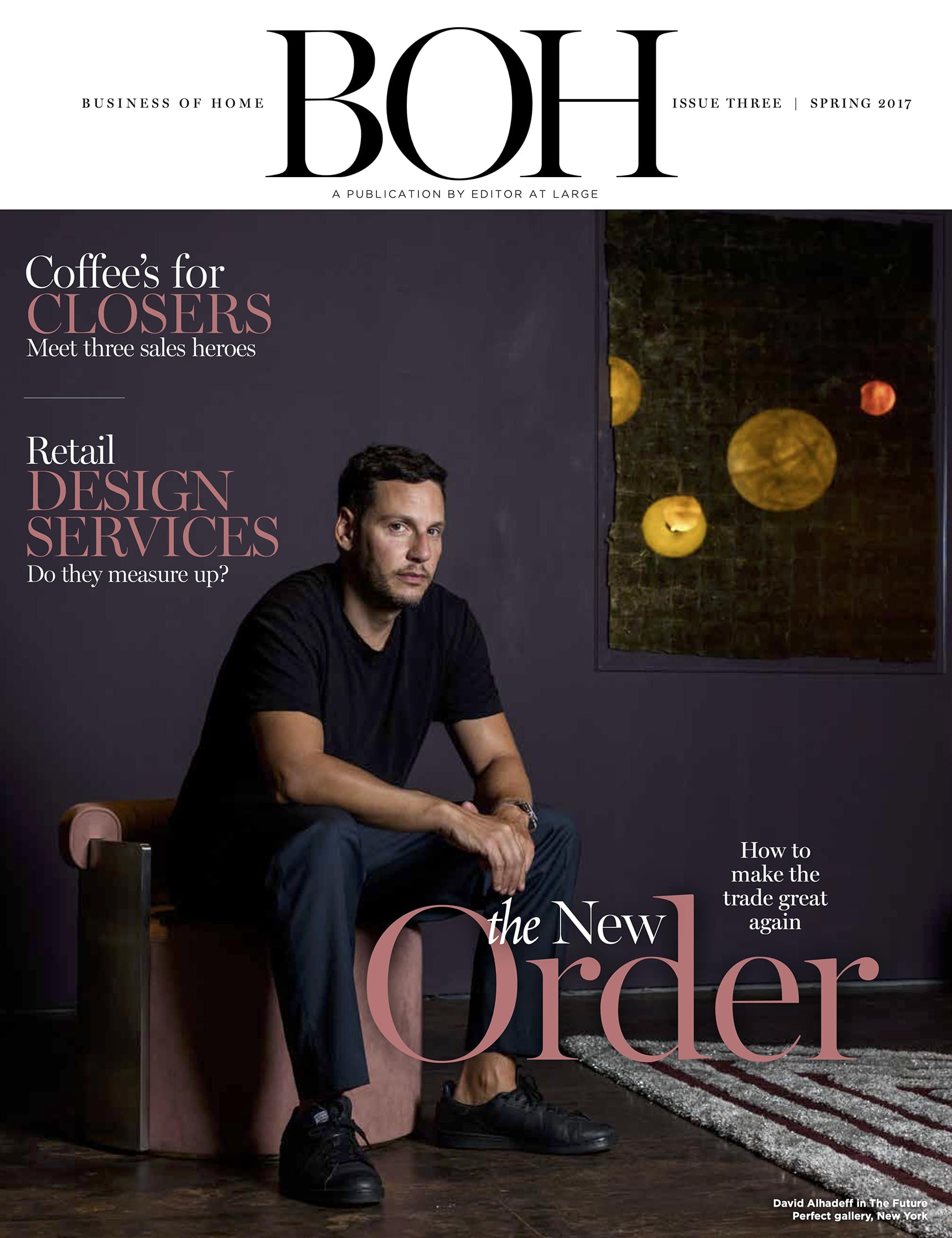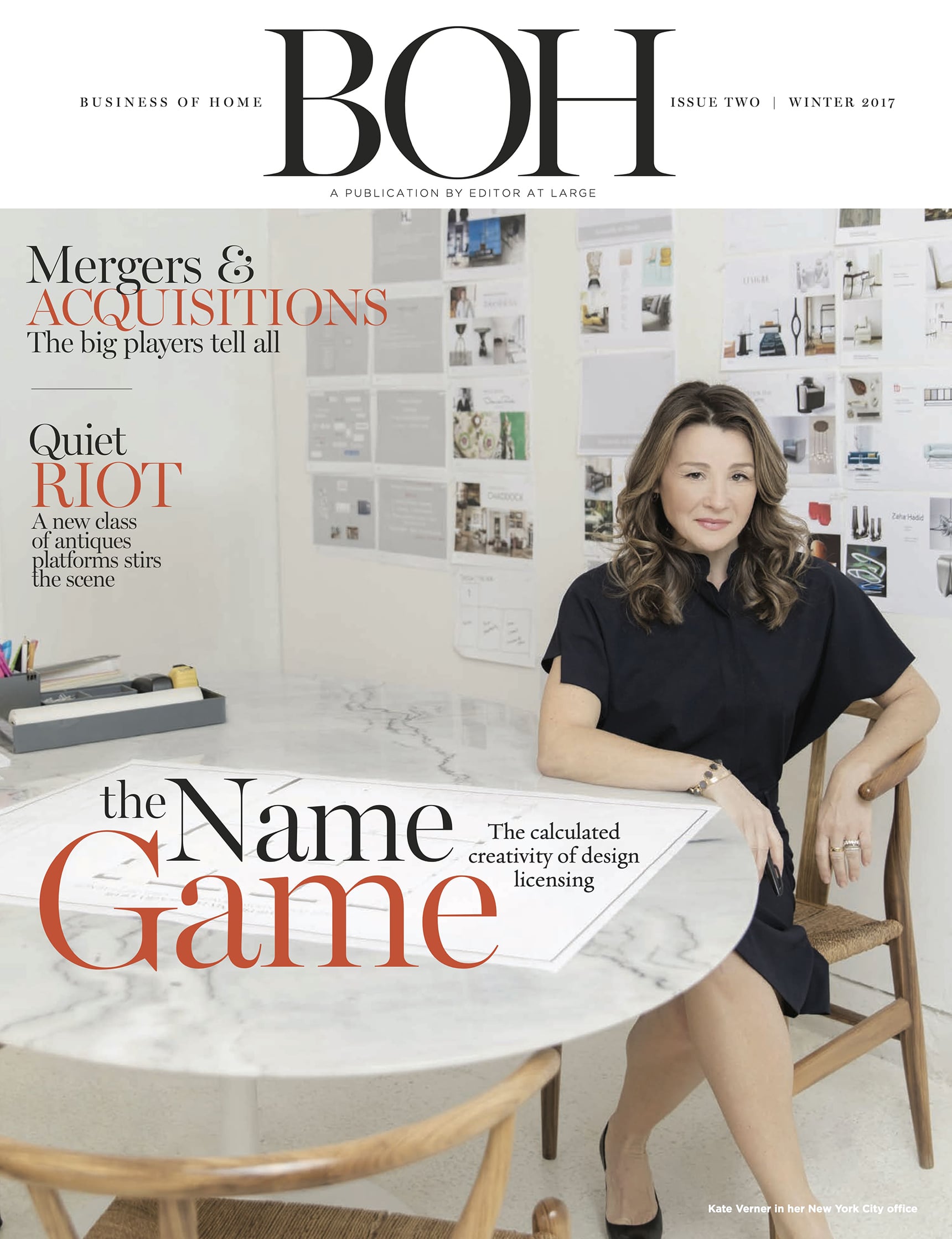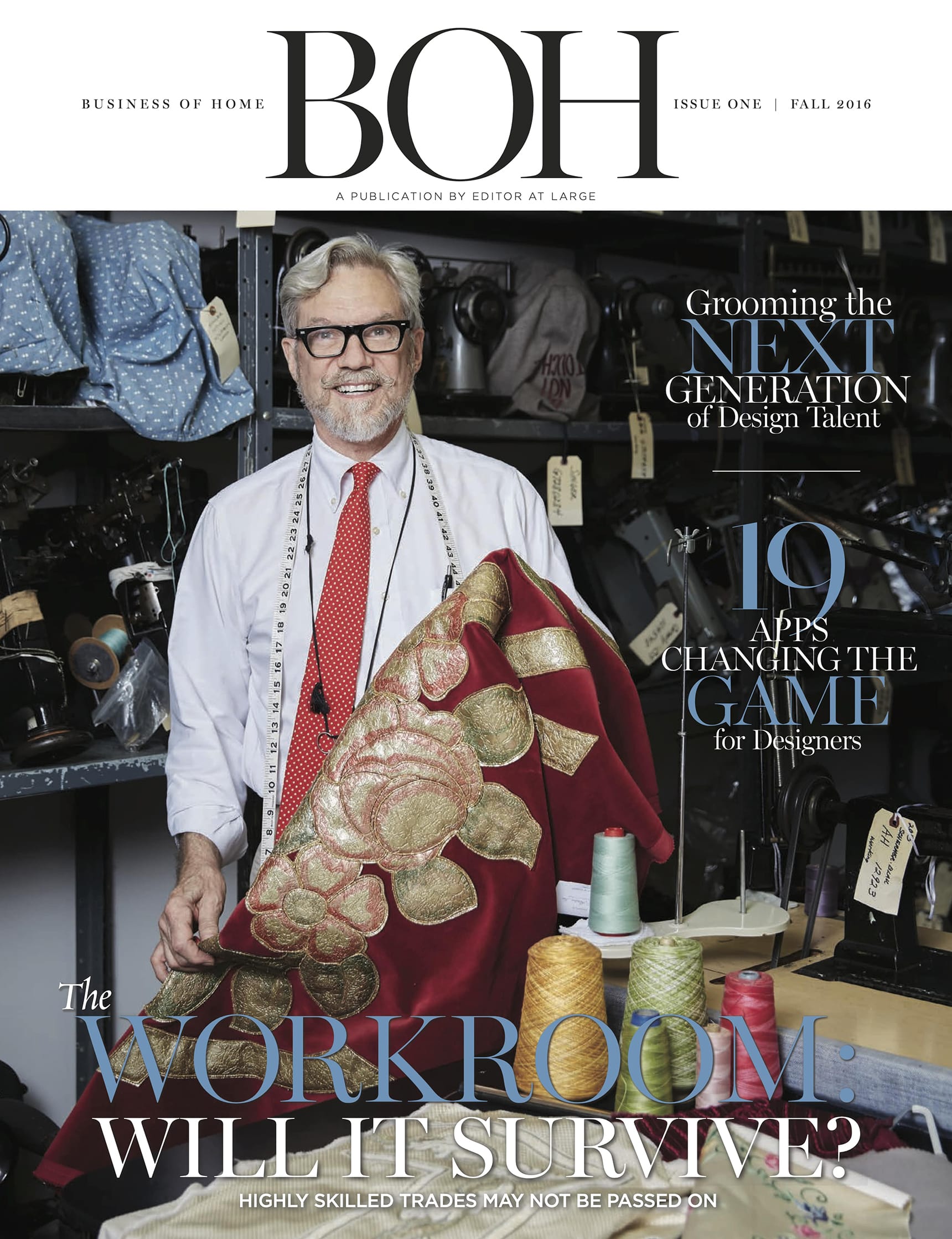Oakland, California– and Atlanta-based designer Kelly Finley of Joy Street Design started her career as a corporate attorney. Now she’s looking to build a design empire, which means developing a team that can make decisions without her.
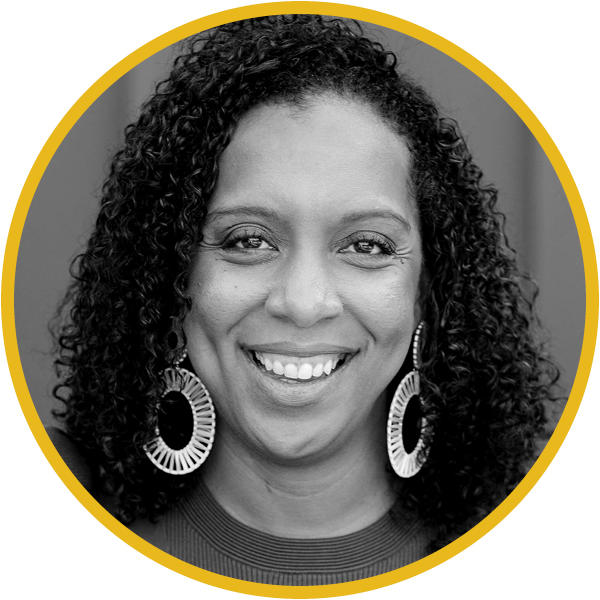
You stepped away from your firm for two weeks to install your room at the Kips Bay Decorator Show House in Palm Beach, Florida—and it changed the way you were thinking about your firm’s growth. What happened?
Obviously everybody knew I was going to be in Florida for two weeks. We didn’t make a big announcement to the clients or anything like that; I did have an out-of-office email set up, but that was kind of perfunctory. I was like, “I’m going down to Florida. I’ll be busy during the day, but feel free to text me.”
Then all the wheels fell off. It was pure chaos the first few days we were down there because our room still looked like a construction zone the day before pictures. I’m an inbox-zero person, but I had 70 to 100 emails that I actually needed to read—that’s how bad it was. That was really difficult for my team, because they had all these questions and I wasn’t even logging on to see them. And then after the hard part of the project was done, I ended up being so exhausted by the meet-and-greet part of the opening that I was not waking up early enough to answer their questions before my day would begin. Over the course of those two weeks, it was basically radio silence from me.
Was it the first time you’d ever disconnected like that?
Maybe for a vacation. But because we didn’t know what to expect, we did not set it up in such a way that my team had other people to go to. It really highlighted for me that we need to make sure that people understand the fundamentals so that my absence doesn’t cause problems in the future. We have full teams, and they shouldn’t necessarily need to talk to me, but they were so worried about their decision making that they just didn’t make the decisions.
When I came back this week, I did one-on-ones with everybody. I said, “Here are the things that I think we need to work on.” Some of it is reminding them that we have a huge policy book that outlines, “After this meeting, these are the five things you should do,” and “To prepare for this meeting, these are the six things you can do.” No one has needed to rely on that when I’m around, so now we’re going back to fundamentals.
Did this illustrate for you where you want to be less involved in day-to-day processes?
Yes. I am actually one of those designers who has no desire to run projects. Some people are like, “Even when I hire, I want to make sure I make all the decisions.” That’s not me. I always knew I wanted to be the creative director—I want to dictate the direction and be able to say when I don’t like something, but I don’t need to be the person picking everything. My issue was that I thought we were much closer to that than we evidently were.
How do you create that boundary?
We’re trying to work more collaboratively. In general, I give overall direction for the concept. I might say, “This is a coastal property, but I don’t want to do blues. I want it to be more like the sunset when it meets the sky.” We talk about what that means, and then they go find those images and bring them back. I can say, “That’s right,” or “No, that’s not what I meant.” But at this point, if I’m not the lead designer on the project, which I’m trying not to do, I don’t ever go searching for anything. My team has full control over that. Yes, I’ll sometimes say I don’t like something, but then they go back to reselect something else that they like.
If you are delegating the design work, where do your clients see you throughout the process?
For 80 percent of our projects, there’s another lead designer. I go to the initial consultation and I tell the clients, “We’re going to send you a proposal.” I don’t say, “This is the last time you’ll see me,” but I’ll say something like, “A lead designer and a design assistant are going to be attached to your project, and they are going to be the people you talk to every day.” From the moment clients sign, the lead designer is their person. They go to the first meeting to get measurements and they do the presentations. I’ll pop in every so often because some people want that—especially clients who knew us before we had so many people on our team. Maybe I’ll pop in while they’re meeting about the concept and say, “Hey, you’re in good hands. Ashley and I talked about this,” just so they know that everything’s still going through me. I very rarely have any clients push back on that.
What would you have told me two or three weeks ago about your philosophy around growth, and what has changed?
I would’ve told you that I’m moving forward with an org chart that has me as the CEO of the larger organization and the creative director of the design firm. That is still what I’m moving toward, but I’ve realized that we are still building it.
What do you hope that will remove from your plate, and what will that mean for you?
I have an operations person who handles the day-to-day administration and project management; a marketing person to oversee marketing and branding; and a financial person who can analyze the numbers for me. The goal is that I won’t be doing eight hours of CEO stuff during the day and then needing to do four hours of creative work at night. I also think that I am a visionary for the firm, and it will allow me to think about what’s next. We have a ton of things in the hopper right now that only get my attention peripherally.
So many designers struggle with delegating, but I love that you’re eager to give work away.
I’m all about business coaching, I’m in Entrepreneurs’ Organization [a nonprofit business network], and I’ve had tons of coaches come to the office. One of them told me, “You have to delegate, not abdicate.” I’m working on that, but I’m an abdicator: I’m like, “Once I give this to you, it is yours.” I will not think about it again—or, let me be clear, I will not think about it again until it’s overdue, and then I’m looking at you and I’m upset. What I should do is say, “Here’s this project, let’s touch base in two days and let me know if you have any questions.” I do that to some extent, but ultimately as soon as it’s off my plate, I expect people to be confident to do the job that they’re supposed to do, and I overestimate that.
You’re assuming everyone can do it just like you.
Exactly. I blame that mindset on working at a corporate law firm, where if people can’t hack it, they have to leave. It’s taken me a while to recognize that just because I can do CAD in two hours, that doesn’t mean that’s normal, and that doesn’t mean that it’s a problem when somebody else can’t.
How does knowing that about yourself shape your approach?
I’ve always known that I have high expectations. But then I had a business coach who ran tests and said, without knowing me, “You’re fast, and you expect other people to be fast.” That really changed my perspective. It made me realize that it takes a certain type of person to work with me, and at the advice of that coach, I now actually say that at the end of every job interview. I say, “OK, I just want to give you some caveats: I am direct, and if you’re going to be sensitive, you should not work with me. I have high expectations, I’m very fast and I expect you to be the same, and it’ll take me a while to get over the fact that you might not be.” Part of it is to make sure that the person doesn’t come in timid and scared—because I have had that, too—but it’s also for me to gauge their reaction.
When you’re working with type A people all day long and literally arguing with people for a living the way I did as a litigator, it is so natural to just be direct with other people. So having a coach point it out really helped. To me, I was just sending an email that said, “No, I don’t like that tile, it’s ugly.” But for some of my team, that really hurt their feelings, and so it was confusing to them when I’d be like, “Hey, let’s go have lunch!” The email hadn’t meant anything to me. We do a lot of personality tests in the office now, and it has helped me tremendously in how I interact with people, and sometimes it makes me read my email one more time before I send it. I’m not willing to not say when I’m unhappy about something, so it doesn’t change what needs to happen, but maybe it changes the way I go about doing it. For one person, I’ll call them into a room and have that conversation privately, whereas for someone else I might casually stop by their desk and be like, “Hey, what happened here?”
What has it felt like as a business owner to grow your team?
I get to gainfully employ all these women in doing something that they love, and I get to do it in a way that matches all of my values. Everybody on our team gets unlimited vacation, health insurance, a 401K, a $1,500 education credit and a $1,500 travel stipend—all of these things that allow them to enjoy their jobs. We have our first person on maternity leave, and now I get why people don’t give maternity leave—it’s expensive! But to be able to do that makes me so proud and grateful. As a designer, you’re making decisions that change people’s homes. But as a business owner, you can really enjoy seeing how your decisions affect the company. Once you truly step out of the day-to-day design, you get to make an organization that you are proud of that really symbolizes your beliefs.
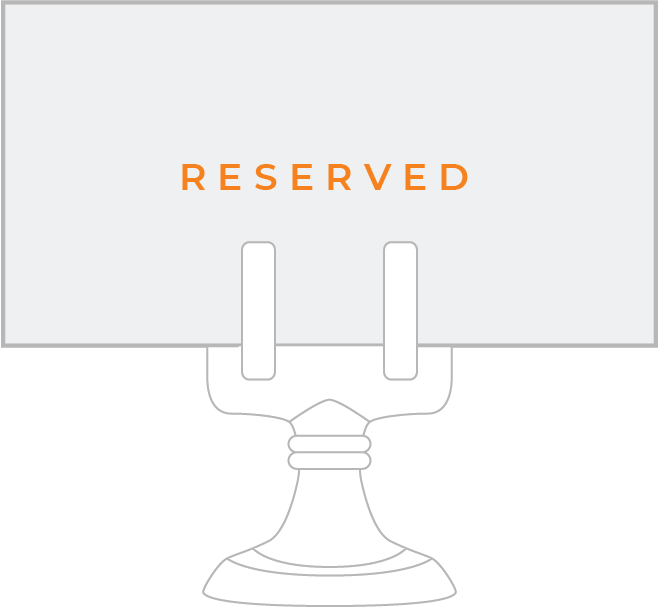
BOH subscribers and BOH Insiders.



















